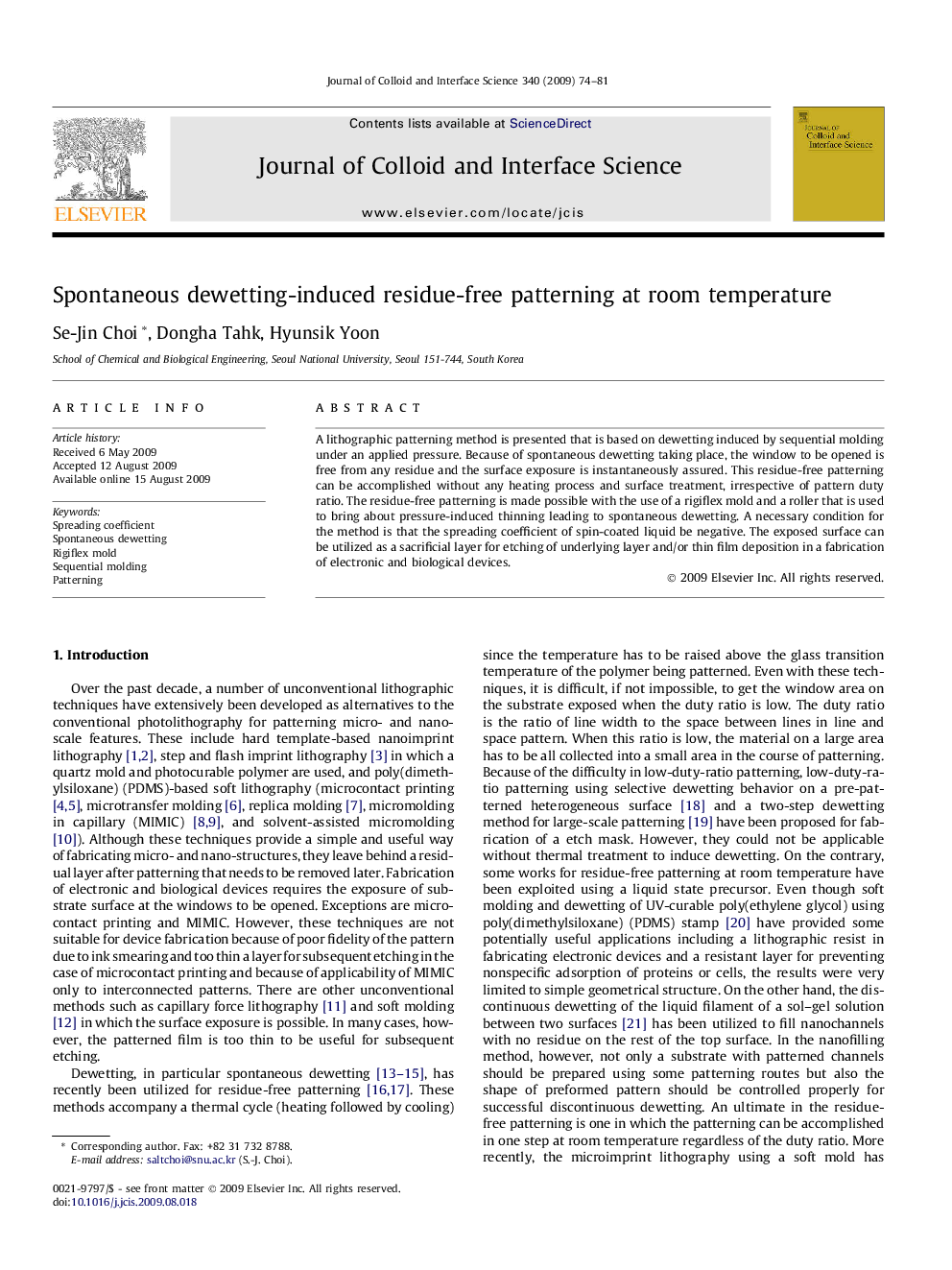| Article ID | Journal | Published Year | Pages | File Type |
|---|---|---|---|---|
| 609954 | Journal of Colloid and Interface Science | 2009 | 8 Pages |
A lithographic patterning method is presented that is based on dewetting induced by sequential molding under an applied pressure. Because of spontaneous dewetting taking place, the window to be opened is free from any residue and the surface exposure is instantaneously assured. This residue-free patterning can be accomplished without any heating process and surface treatment, irrespective of pattern duty ratio. The residue-free patterning is made possible with the use of a rigiflex mold and a roller that is used to bring about pressure-induced thinning leading to spontaneous dewetting. A necessary condition for the method is that the spreading coefficient of spin-coated liquid be negative. The exposed surface can be utilized as a sacrificial layer for etching of underlying layer and/or thin film deposition in a fabrication of electronic and biological devices.
Graphical abstractThe dewetting effect on resist and its utilization with sequential micromolding technology accomplish facile residue-free patterning at room temperature without exceptionally expensive optical protocols, irrespective of pattern duty ratio.Figure optionsDownload full-size imageDownload as PowerPoint slide
